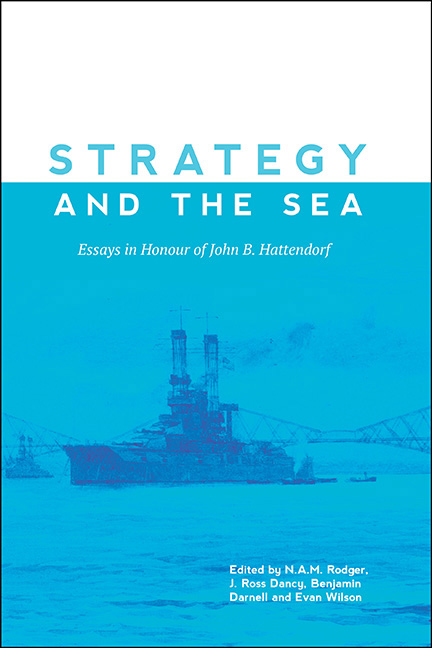79 results
Severe acute respiratory coronavirus virus 2 (SARS-CoV-2) outbreak investigation in a hospital emergency department—California, December 2020–January 2021
- Part of
-
- Journal:
- Infection Control & Hospital Epidemiology / Volume 44 / Issue 7 / July 2023
- Published online by Cambridge University Press:
- 20 May 2022, pp. 1187-1192
- Print publication:
- July 2023
-
- Article
-
- You have access
- Open access
- HTML
- Export citation
Characterisation of age and polarity at onset in bipolar disorder
-
- Journal:
- The British Journal of Psychiatry / Volume 219 / Issue 6 / December 2021
- Published online by Cambridge University Press:
- 25 August 2021, pp. 659-669
- Print publication:
- December 2021
-
- Article
-
- You have access
- Open access
- HTML
- Export citation
Chemical, Biological, Radiological, Nuclear, and Explosive (CBRNE) Science and the CBRNE Science Medical Operations Science Support Expert (CMOSSE)
-
- Journal:
- Disaster Medicine and Public Health Preparedness / Volume 13 / Issue 5-6 / December 2019
- Published online by Cambridge University Press:
- 17 June 2019, pp. 995-1010
-
- Article
- Export citation
The Short Performance Physical Battery Is Associated with One-Year Emergency Department Visits and Hospitalization
-
- Journal:
- Canadian Journal on Aging / La Revue canadienne du vieillissement / Volume 38 / Issue 4 / December 2019
- Published online by Cambridge University Press:
- 04 March 2019, pp. 507-511
-
- Article
-
- You have access
- HTML
- Export citation
Global cities and cultural diversity: challenges and opportunities for young people's nutrition
- Part of
-
- Journal:
- Proceedings of the Nutrition Society / Volume 77 / Issue 4 / November 2018
- Published online by Cambridge University Press:
- 27 September 2018, pp. 456-469
-
- Article
-
- You have access
- HTML
- Export citation
Uranium-Series Ages of Marine Terrace Corals from the Pacific Coast of North America and Implications for Last-Interglacial Sea Level History
-
- Journal:
- Quaternary Research / Volume 42 / Issue 1 / July 1994
- Published online by Cambridge University Press:
- 20 January 2017, pp. 72-87
-
- Article
- Export citation
Frontmatter
-
- Book:
- Strategy and the Sea
- Published by:
- Boydell & Brewer
- Published online:
- 05 July 2016
- Print publication:
- 16 June 2016, pp i-iv
-
- Chapter
- Export citation
List of Contributors
-
- Book:
- Strategy and the Sea
- Published by:
- Boydell & Brewer
- Published online:
- 05 July 2016
- Print publication:
- 16 June 2016, pp ix-xii
-
- Chapter
- Export citation
List of Illustrations
-
- Book:
- Strategy and the Sea
- Published by:
- Boydell & Brewer
- Published online:
- 05 July 2016
- Print publication:
- 16 June 2016, pp vii-vii
-
- Chapter
- Export citation
A Bibliography of Books, Articles and Reviews Authored, Co-authored, Edited or Co-edited by John B. Hattendorf, 1960–2015
-
- Book:
- Strategy and the Sea
- Published by:
- Boydell & Brewer
- Published online:
- 05 July 2016
- Print publication:
- 16 June 2016, pp 255-284
-
- Chapter
- Export citation
Contents
-
- Book:
- Strategy and the Sea
- Published by:
- Boydell & Brewer
- Published online:
- 05 July 2016
- Print publication:
- 16 June 2016, pp v-vi
-
- Chapter
- Export citation
List of Abbreviations
-
- Book:
- Strategy and the Sea
- Published by:
- Boydell & Brewer
- Published online:
- 05 July 2016
- Print publication:
- 16 June 2016, pp viii-viii
-
- Chapter
- Export citation
Index
-
- Book:
- Strategy and the Sea
- Published by:
- Boydell & Brewer
- Published online:
- 05 July 2016
- Print publication:
- 16 June 2016, pp 285-304
-
- Chapter
- Export citation
Tabula Gratulatoria
-
- Book:
- Strategy and the Sea
- Published by:
- Boydell & Brewer
- Published online:
- 05 July 2016
- Print publication:
- 16 June 2016, pp 305-306
-
- Chapter
- Export citation

Strategy and the Sea
- Essays in Honour of John B. Hattendorf
-
- Published by:
- Boydell & Brewer
- Published online:
- 05 July 2016
- Print publication:
- 16 June 2016
New Cretaceous and Tertiary Pholadidae (Mollusca: Bivalvia) from California
-
- Journal:
- Journal of Paleontology / Volume 67 / Issue 3 / May 1993
- Published online by Cambridge University Press:
- 20 May 2016, pp. 397-404
-
- Article
- Export citation
Do Refuge Requirements for Biotechnology Crops Promote Economic Efficiency? Some Evidence for Bt Cotton
-
- Journal:
- Journal of Agricultural and Applied Economics / Volume 39 / Issue 1 / April 2007
- Published online by Cambridge University Press:
- 28 April 2015, pp. 171-185
-
- Article
- Export citation
Contributors
-
-
- Book:
- The Cambridge Dictionary of Philosophy
- Published online:
- 05 August 2015
- Print publication:
- 27 April 2015, pp ix-xxx
-
- Chapter
- Export citation
OC38: Introduction of plasma vitamin C and Ferric Reducing Antioxidant Power into a combined biomarker with plasma carotenoids increases the association with fruit and vegetable intake
-
- Journal:
- Proceedings of the Nutrition Society / Volume 74 / Issue OCE1 / 2015
- Published online by Cambridge University Press:
- 15 April 2015, E38
-
- Article
-
- You have access
- HTML
- Export citation
Osteoporosis Prescribing in Long-Term Care: Impact of a Provincial Knowledge Translation Strategy*
-
- Journal:
- Canadian Journal on Aging / La Revue canadienne du vieillissement / Volume 34 / Issue 2 / June 2015
- Published online by Cambridge University Press:
- 08 April 2015, pp. 137-148
-
- Article
- Export citation



